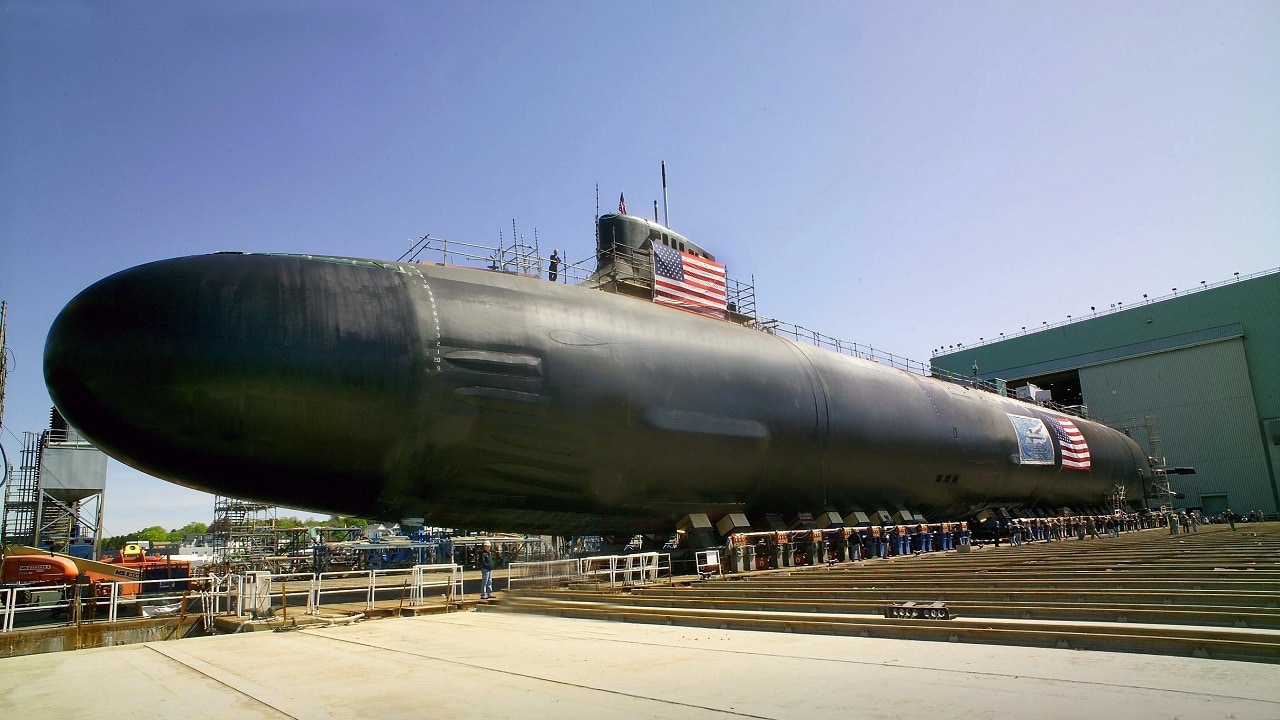The US Navy nuclear-powered attack submarine USS Jimmy Carter celebrated the 17th anniversary of its commissioning in February.
Laid down in 1998, launched in 2004, and commissioned in 2005, Carter is one of only three Seawolf-class submarines and the only active sub in the US fleet named after a president.
Though Seawolf-class subs are known as some of the most sophisticated attack subs ever, Carter stands out among the three subs of the class.
Larger and more advanced than the other two Seawolf boats, Carter has been tasked with some of the US Navy’s most secretive missions.
Seawolf-class
The Navy began designing Seawolf-class subs in 1983 in direct response to the Soviet Navy’s newest Akula-class attack submarines, which were believed to be stealthier than the US’s Los Angeles-class attack subs.
At 353 feet long and 40 feet wide, Seawolf-class subs displace 9,138 tons when fully submerged and can sailing over 25 knots. The first boat, USS Seawolf, was commissioned in 1997, while the second boat, USS Connecticut, was commissioned a year later.
They are designed to be the ultimate stealthy hunter-killer submarines. Their pump-jet propulsion helps keep the noise they make at 95 decibels, just above the level of general ocean background noise, while their high-strength HY-100 steel hulls enable them to dive about 2,000 feet.
Equipped with eight torpedo tubes — four more than Los Angeles-class subs — the Seawolfs can carry up to 50 torpedo-sized weapons, including Mk 48 torpedoes, Tomahawk cruise missiles, and Harpoon anti-ship missiles.
The Seawolfs also have an advanced suite of electronics, including a 24-foot diameter spherical sonar array mounted in the bow, a wide-aperture flank array sonar mounted on the sides, and the recently added ability to carry a towed-array sonar.
The subs’ sails are reinforced, allowing them to punch through ice floes in the Arctic, where Soviet and Russian attack and missile submarines have long operated.
The US Navy originally planned to build 29 Seawolf-class subs over 10 years. By the time Seawolf and Connecticut hit the water, however, the Soviet Union had collapsed. By the early 1990s, the plan had been cut to 12 subs.
The Russian navy that emerged from the Cold War wasn’t seen as a big enough threat to justify the astronomical $33 billion price of those 12 Seawolf-class subs, and the program was eventually reduced to just three boats.
USS Jimmy Carter
Carter spent more time in the shipyard than Seawolf or Connecticut because the Navy decided to modify it for special intelligence-gathering missions.
The modification included adding special thrusters fore and aft that allow the sub to remain stationary underwater, as well as a 100-foot hull extension known as the Multi-Mission Platform, which increased its length to 435 feet and its fully submerged displacement to 12,158 tons.
The MMP is essentially an underwater hangar with a sort of hourglass passage running its length. It allows Carter to carry remotely operated vehicles, cable spools, special-operations craft, and other advanced technologies needed to carry out classified operations and “enhanced warfighting capabilities,” the Navy says.
The space can also be used to deploy Navy SEALs and other special-operations forces.
Carter is also the only active-duty submarine named after a president; a naming convention typically reserved for aircraft carriers.
President Jimmy Carter himself served on submarines when he was in the Navy and was part of the Navy’s nuclear-powered submarine program, working under Adm. Hyman G. Rickover, who is known as the “Father of the Nuclear Navy.”
What exactly USS Jimmy Carter does is a closely guarded secret, but it is believed to be able to tap undersea fiber-optic communications lines and conduct intelligence-gathering missions.
In 2017, the sub returned to its homeport flying the skull and crossbones — a tradition among submariners usually associated with a successful mission. The sub has received Battle Efficiency awards and a Presidential Unit Citation, though nobody but the crew knows what they did to earn them.
Carter’s official history says it “performed under a wide range of adverse and extremely stressful conditions without external support … in pursuit of vital national security goals,” during the operation for which it received its Presidential Unit Citation, which is cryptically named “Mission 7.”
Despite its role as an intelligence-gatherer, Carter remains one of the best attack subs in service, and its deployment, especially when done alongside its siblings, is often an intimidating sign.
Benjamin Brimelow is a reporter at Business Insider.

